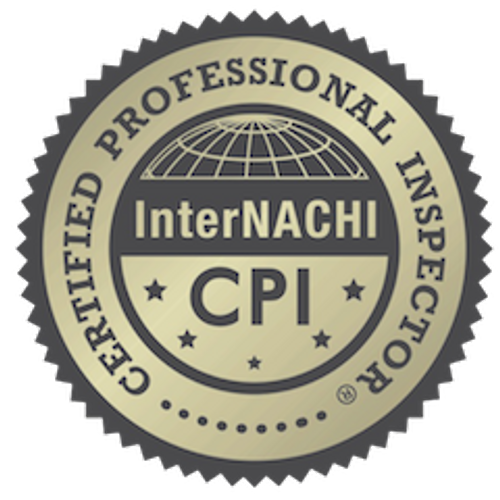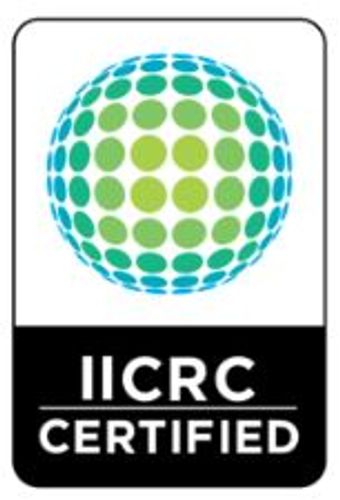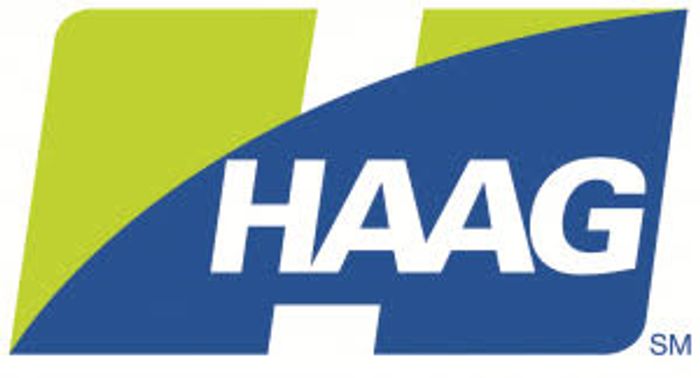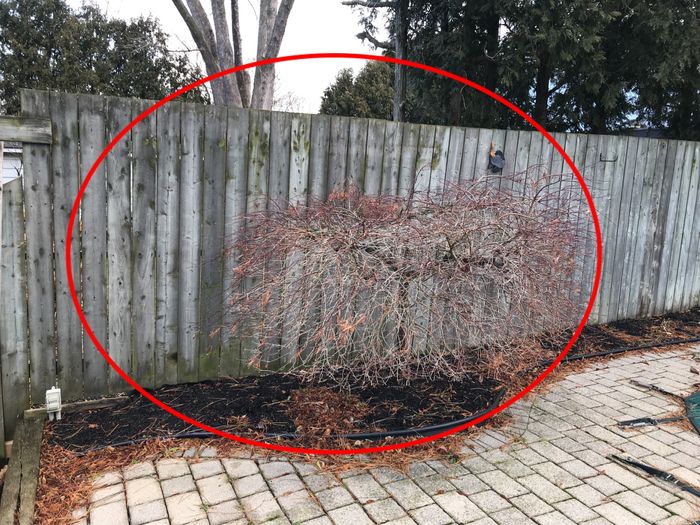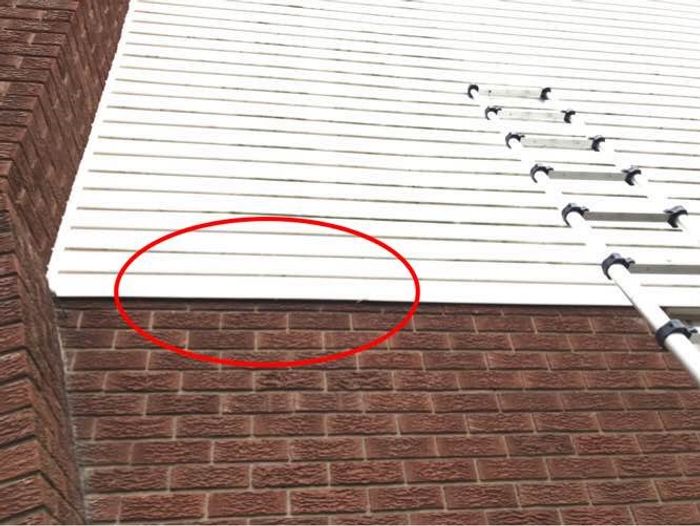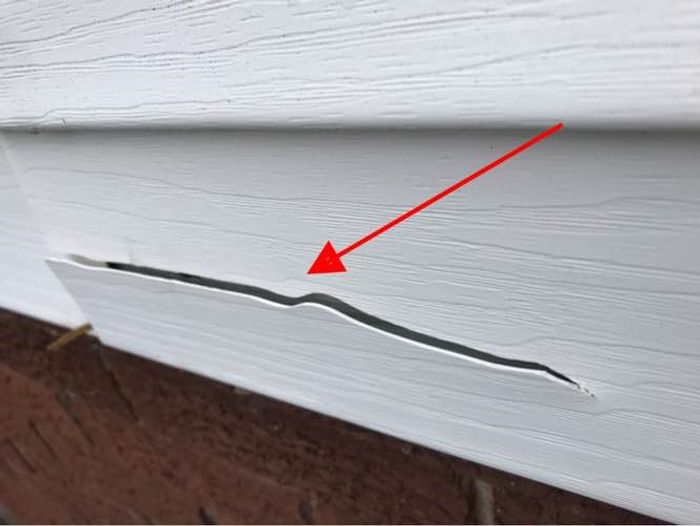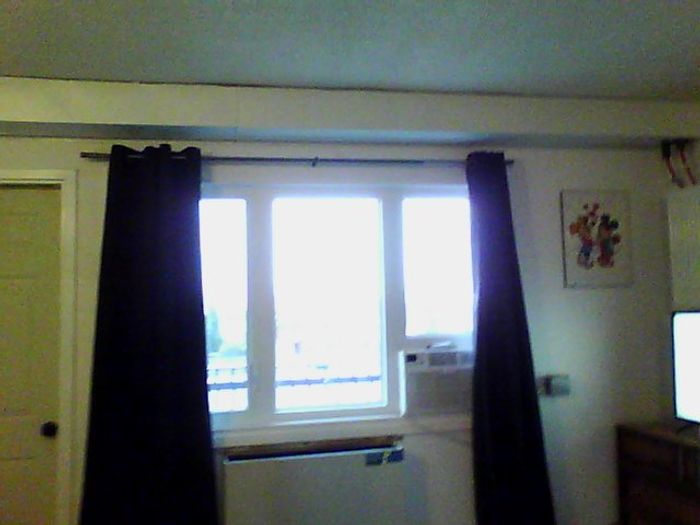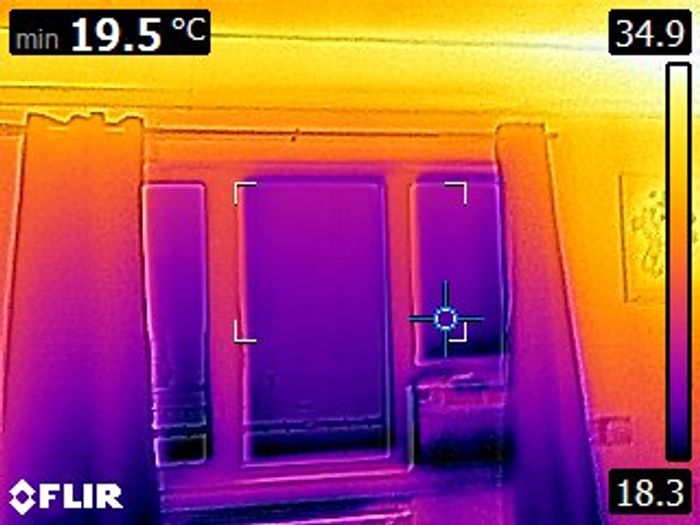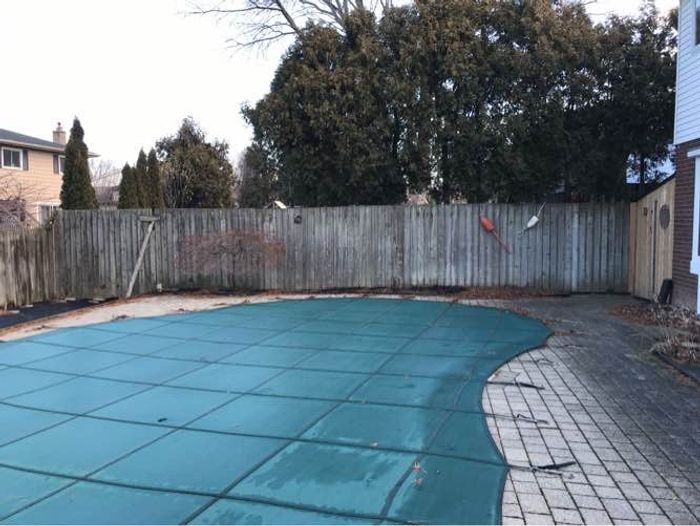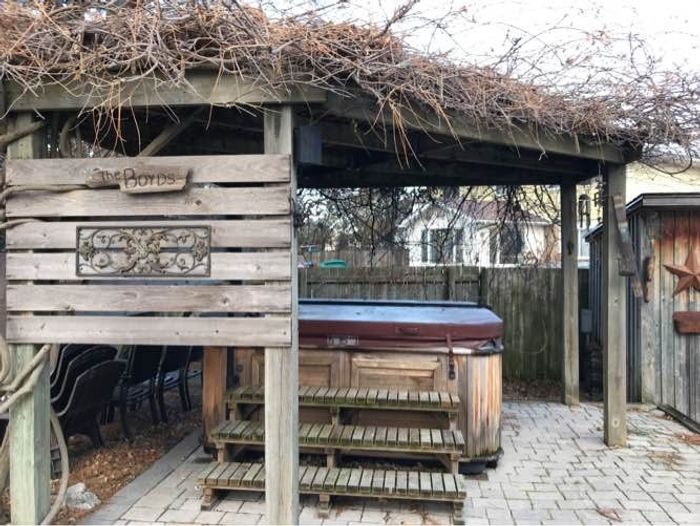The Scope and Purpose of a Home Inspection
Purchasing property involves risk
The purpose of a home inspection is to help reduce the risk associated with the purchase of a structure by providing a professional opinion about the overall condition of the structure. A home inspection is a limited visual inspection and it cannot eliminate this risk. Some homes present more risks than others. We cannot control this, but we try to help educate you about what we don’t know during the inspection process. This is more difficult to convey in a report and one of many reasons why we recommend that you attend the inspection.
A home inspection is not an insurance policy
This report does not substitute for or serve as a warranty or guarantee of any kind. Home warranties can be purchased separately from insuring firms that provide this service.
A home inspection is visual and not destructive
The descriptions and observations in this report are based on a visual inspection of the structure. We inspect the aspects of the structure that can be viewed without dismantling, damaging or disfiguring the structure and without moving furniture and interior furnishings. Areas that are concealed, hidden or inaccessible to view are not covered by this inspection. Some systems cannot be tested during this inspection as testing risks damaging the building. For example, overflow drains on bathtubs are generally not tested because if they were found to be leaking they could damage the finishes below. Our procedures involve non-invasive investigation and non-destructive testing which will limit the scope of the inspection.
This is not an inspection for code compliance
This inspection and report are not intended for city / local code compliance. During the construction process structures are inspected for code compliance by municipal inspectors. Framing is open at this time and conditions can be fully viewed. Framing is not open during inspections of finished homes, and this limits the inspection. All houses fall out of code compliance shortly after they are built, as the codes continually change. National codes are augmented at least every three years for all of the varying disciplines. Municipalities can choose to adopt and phase in sections of the codes on their own timetables. There are generally no requirements to bring older homes into compliance unless substantial renovation is being done.
This is just our opinion
Construction techniques and standards vary. There is no one way to build a house or install a system in a house. The observations in this report are the opinions of the home inspector. Other inspectors and contractors are likely to have some differing opinions. You are welcome to seek opinions from other professionals.
The scope of this inspection
This inspection will include the following systems: exterior, roof, structure, drainage, foundation, attic, interior, plumbing, electrical and heating. The evaluation will be based on limited observations that are primarily visual and non-invasive. This inspection and report are not intended to be technically exhaustive.
Your expectations
The overall goal of a home inspection is to help ensure that your expectations are appropriate with the house you are proposing to buy. To this end we assist with discovery by showing and documenting observations during the home inspection. This should not be mistaken for a technically exhaustive inspection designed to uncover every defect with a building. Such inspections are available but they are generally cost-prohibitive to most homebuyers.
Your participation is requested
Your presence is requested during this inspection. A written report will not substitute for all the possible information that can be conveyed verbally by a shared visual observation of the conditions of the property.
How to Read This Report
Getting the Information to You
This report is designed to deliver important and technical information in a way that is easy for anyone to access and understand. If you are in a hurry, you can take a quick look at our "Summary Page” and quickly get critical information for important decision making. However, we strongly recommend that you take the time to read the full Report, which includes digital photographs, captions, diagrams, descriptions, videos and hot links to additional information.
The best way to get the layers of information that are presented in this report is to read your report online, which will allow you to expand your learning about your house. You will notice some words or series of words highlighted in blue and underlined – clicking on these will provide you with a link to additional information.
This report can also be printed on paper or to a PDF document.
Chapters and Sections
This report is divided into chapters that parcel the home into logical inspection components. Each chapter is broken into sections that relate to a specific system or component of the home. You can navigate between chapters with the click of a button on the left side margin.
Most sections will contain some descriptive information done in black font. Observation narrative, done in colored boxes, will be included if a system or component is found to be significantly deficient in some way or if we wish to provide helpful additional information about the system or the scope of our inspection. If a system or component of the home was deemed to be in satisfactory or serviceable condition, there may be no narrative observation comments in that section and it may simply say “tested,” or “inspected.”
Observation Labels
All narrative observations are colored, numbered and labeled to help you find, refer to, and understand the severity of the observation. Observation colors and labels used in this report are:
- Major Concern:Repair items that may cost significant money to correct now or in the near future, or items that require immediate attention to prevent additional damage or eliminate safety hazards.
- Repair:Repair and maintenance items noted during inspection. Please note that some repair items can be expensive to correct such as re-finishing hardwood floors, but are considered simply repair items due to their cosmetic nature.
- Improve:Observations that are not necessarily defects, but which could be improved for safety, efficiency, or reliability reasons.
- Monitor:Items that should be watched to see if correction may be needed in the future.
- Due Diligence:Observation such as a buried oil tank that may require further investigation to determine the severity and / or urgency of repair.
- Future Project:A repair that may be deferred for some time but should be on the radar for repair or replacement in the near future.
- Efficiency:Denotes observations that are needed to make the home more energy efficient as well as to bring the home up to modern insulation standards. This category typically includes windows and insulation. Other items, such as lighting and appliances, are not inspected for their energy status.
- Completed:Items that were initially an issue but have since been completed.
- Note:Refers to aside information and /or any comments elaborating on descriptions of systems in the home or limitations to the home inspection.
- Description:Detailed description of various aspects of the property noted during the inspection.
Summary Page
The Summary Page is designed as a bulleted overview of all the observations noted during inspection. This helpful overview is not a substitution for reading the entire inspection report. The entire report must be read to get a complete understanding of this inspection report as the Summary Page does not include photographs or photo captions.
Moisture Meter Testing
Where moisture meter testing is indicated in this report aFlir E8 Thermal Camera was used.
Summary
Repairs
- G-1 Grounds:
Downspouts are discharging adjacent to the foundation. This can cause foundation settlement or basement moisture problems. Make sure all downspouts discharge into a proper tight-line system that diverts water at least 5 feet away from the foundation.
- G-2 Grounds:
I recommend a cleaning and servicing of the site drainage system to ensure all ground water and roof runoff is being reliably controlled and diverted away from the building. Examples of observations noted during inspection include:
- G-3 Grounds:
All trees, branches and vegetation should be pruned at least six feet away from the building to eliminate a condition conducive to wood destroying organisms and a path for rodent entry - see north side trees especially.
- G-5 Grounds:
Localized areas of rot and loose and damaged fencing was noted. This is characteristic of older fencing. Implement repairs to the fencing as needed until updating. The urgency of this project is subjective and depends how much the new occupant wants to have a fence and what they want it for.
- G-6 Grounds:
Repair the loose fence posts in the back yard to properly secure the fence.
- G-7 Grounds:
Localized damage was noted to the fencing - see west side. Implement carpentry repairs as needed.
- E-2 Electrical:
Inadequate labeling of the main electrical panel circuit breakers was noted during inspection. This should be corrected for improved safety.
- SB-1 Structure and Basement:
Snow cover limited the scope of this inspection. I was unable to see the roof and exposed flatwork such as the patio and driveway.
- I-4 Interior:
The interior of the home smells of cigarette smoke. This can sometime be a difficult odor to remove without a full replacement of finishes - floor finishes and interior paint. I recommend consulting with a specialist about indoor air quality and indoor odors if you wish to fully eliminate these odors.
Due Diligences
- R-1 Roof:
The roofing material on this building is a recently installed dimensional or architectural grade shingle. These are often rated as 30-40 year shingles. In practice, as a roof assembly, these tend to last about 18-23 years depending on the quality of the installation, the steepness of the roof and the exposure. The installation appears neat and professional. Inquire with the seller about any warranty information for this roof. Many professional roofing companies will offer limited workmanship warranties.
Examples of observations noted during inspection include:
- Ice & Water Shield installed at eave
- Drip edge
- 6 Nail pattern observed.
In our opinion this was a premium install.
- SB-2 Structure and Basement:
A musty odor was noted in the basement during inspection today. This may have been coming from the water damage in the cold room? Or maybe just because it has been vacant? Difficult to tell during a one-time inspection if this is from the house being vacant or an on-going problem. I inspected around the perimeter - no signs of swelling wood or water damage were noted. I was unable to see much of the floor as the finish floor is a floating floor. Monitor to see how this space does. If a must odor persists additional water proofing may be needed.
Efficiencies
- R-3 Roof:
The attic insulation could be improved to modern standards, which recommend R-60 on the floor and R-21 on walls. R-value is the measure of resistance to heat loss; the higher the R-value the better the insulation. During insulation repairs it is best practices to implement any air seal-up repairs to seal air leakage. Also, be sure you have completed any wiring or other projects that are needed in the attic. Then, hire an insulation contractor to improve thermal barriers.
Notes
- GC-1 General Comments:
This inspection has been prepared for the seller. Every effort is made on pre-listing inspections to provide the same comprehensive inspection and report as for a buyer's inspection. If you are a buyer and you are reading this report, I am happy to provide a complementary phone consult about this report once I have permission from my client to discuss the report. If repairs have been made, and re-inspection services are requested, I recommend contacting me directly about scheduling a re-inspection of the property.
- R-2 Roof:
I did not crawl the crawl space for the attic where there was no ramp or safe way to access the space. Crawling in the V of trusses or on top of framing risks damaging thermal barriers and ceiling finishes and is not a safe way to access an attic. This limited inspection of this space.
- E-3 Electrical:
Carbon monoxide alarms were found and noted during inspection. Be sure to check these regularly. The standard is 1/ floor and 1 outside all sleeping areas.
- I-3 Interior:
During inspection today I inspected the headers and sills around all windows where accessible. I spot checked around windows using a moisture meter. No water stains, signs of leakage or elevated readings were found. This is good. It is always a good practice to monitor any exposed windows, especially those with south and west exposures to check for leaks during heavy wind-driven rains.
General Comments
Building Characteristics, Conditions and Limitations
Style of Home: Contemporary
Type of Building : Single Family (2-story)
Approximate Square Footage: 2250
Approximate Year of Original Construction: 1998
Attending the Inspection: Buyer and Buyer's Agent
Occupancy: Occupied
Animals Present: No
Weather during the inspection: Clear
Approximate temperature during the inspection: Over 70[F]
Ground/Soil surface conditions: Dry
For the Purposes of This Report, the Front Door Faces: East
This inspection has been prepared for the seller. Every effort is made on pre-listing inspections to provide the same comprehensive inspection and report as for a buyer's inspection. If you are a buyer and you are reading this report, I am happy to provide a complementary phone consult about this report once I have permission from my client to discuss the report. If repairs have been made, and re-inspection services are requested, I recommend contacting me directly about scheduling a re-inspection of the property.
Grounds
Drainage and Lot Location
Clearance to Grade: Standard
Downspout Discharge: Next to Foundation
Site Description: Flat
Downspouts are discharging adjacent to the foundation. This can cause foundation settlement or basement moisture problems. Make sure all downspouts discharge into a proper tight-line system that diverts water at least 5 feet away from the foundation.
I recommend a cleaning and servicing of the site drainage system to ensure all ground water and roof runoff is being reliably controlled and diverted away from the building. Examples of observations noted during inspection include:
Driveways/Walkways/Flatwork
Driveway: Concrete
Walkways: Concrete
Patios: Pavers
Grounds, Trees and Vegetation
Trees/Vegetation too near building: Yes
All trees, branches and vegetation should be pruned at least six feet away from the building to eliminate a condition conducive to wood destroying organisms and a path for rodent entry - see north side trees especially.
Fences
Present
Localized areas of rot and loose and damaged fencing was noted. This is characteristic of older fencing. Implement repairs to the fencing as needed until updating. The urgency of this project is subjective and depends how much the new occupant wants to have a fence and what they want it for.
Repair the loose fence posts in the back yard to properly secure the fence.
Localized damage was noted to the fencing - see west side. Implement carpentry repairs as needed.
Roof
Roof Materials
Method of Roof Inspection: Walked on roof
Roof Style: Gable
Roof Materials: Architectural grade composition shingle
Approximate Age of Roof: 4-6 Years
Overlay Roof: No
The roofing material on this building is a recently installed dimensional or architectural grade shingle. These are often rated as 30-40 year shingles. In practice, as a roof assembly, these tend to last about 18-23 years depending on the quality of the installation, the steepness of the roof and the exposure. The installation appears neat and professional. Inquire with the seller about any warranty information for this roof. Many professional roofing companies will offer limited workmanship warranties.
Examples of observations noted during inspection include:
- Ice & Water Shield installed at eave
- Drip edge
- 6 Nail pattern observed.
In our opinion this was a premium install.
Gutters and Downspouts
Gutter and Downspout Materials: Aluminum, Seamless Aluminum
Attic Access
Crawled partial
I did not crawl the crawl space for the attic where there was no ramp or safe way to access the space. Crawling in the V of trusses or on top of framing risks damaging thermal barriers and ceiling finishes and is not a safe way to access an attic. This limited inspection of this space.
Attic Insulation
Insulation Type: Fiberglass
Approximate Insulation R-Value on Attic Floor: 6, Improve to Modern Standard
The attic insulation could be improved to modern standards, which recommend R-60 on the floor and R-21 on walls. R-value is the measure of resistance to heat loss; the higher the R-value the better the insulation. During insulation repairs it is best practices to implement any air seal-up repairs to seal air leakage. Also, be sure you have completed any wiring or other projects that are needed in the attic. Then, hire an insulation contractor to improve thermal barriers.
Roof/Attic (1)
Roof Materials
Method of Roof Inspection: Walked on roof
Electrical
Electric Service Voltage Tested
Service Voltage: 120/240
I tested the voltage at the electric panel today. It tested in a normal range of 235-245 volts. Most residential construction is listed as 120/240 volts and it is normal for some slight fluctuation.
Electric Service
Service Entrance: Above Ground
Meter Base Amperage: 200
Service Equipment
Service Entrance (SE) conductor Size: Aluminum, 4/0, 200 amps
Main Panel Amperage: 100 amps
Electric Service Amperage: 100 amps
Main Electric Panel Location: Basement
Panel Manufacturer: Siemens
Inadequate labeling of the main electrical panel circuit breakers was noted during inspection. This should be corrected for improved safety.
Branch Wiring
Wiring Method: Non-metallic sheathed cable
Receptacles and Fixtures
Inspection Method: Random Testing
Smoke and Carbon Monoxide Alarm Systems
CO Alarms Noted: On Main Floor
On Main Floor On 2nd Floor
On 2nd Floor In Basement
In Basement On 3rd Floor
On 3rd Floor In Bonus Room
In Bonus Room
CO Alarms: Present
The installation of carbon monoxide alarms is recommended for all homes that have fuel burning appliances such as gas or oil furnaces, gas water heaters, gas ovens and cook-tops, gas fireplaces and wood stoves. The location should be: at least one alarm outside of all sleeping areas and one on each floor of the house. Best practices are to have these alarms hardwired with a battery back-up - though requirements are for the installation to meet manufacturer's specifications. Carbon monoxide is a colorless, odorless gas that can cause sickness, nausea and even death. Alarms have a useful service life of roughly 6 years, so changing them more frequently than smoke alarms is recommended.
Smoke Alarms Noted: On Main Floor
On Main Floor On 2nd Floor
On 2nd Floor In Basement
In Basement On 3rd Floor
On 3rd Floor In All Bedrooms
In All Bedrooms In Bonus Room
In Bonus Room
Carbon monoxide alarms were found and noted during inspection. Be sure to check these regularly. The standard is 1/ floor and 1 outside all sleeping areas.
Electrical Grounding System
Present - Could Not Confirm
Electrical Bonding System
Present - Could Not Confirm
Plumbing
Water Service Supply
Pipe Material: Copper
Water Supply: Public water
Water Pressure: 40 PSI
Pressure Reducing Valve: Present
This house has a pressure reducing valve to control high water pressure in the street.
Main Water Shut-off Location: Basement
Waste Pipe and Discharge
Waste and Vent Pipe Materials: ABS plastic
Water Heater
Straps : Present
Structure and Basement
Foundation
% of Foundation Not Visible: 90%
Building Configuration: Basement
Foundation Description: Poured concrete
Snow cover limited the scope of this inspection. I was unable to see the roof and exposed flatwork such as the patio and driveway.
Floor, Wall and Ceiling Framing
Wall Framing: Not visible
Wall Sheathing: Not visible
Basement Moisture
Some signs
A musty odor was noted in the basement during inspection today. This may have been coming from the water damage in the cold room? Or maybe just because it has been vacant? Difficult to tell during a one-time inspection if this is from the house being vacant or an on-going problem. I inspected around the perimeter - no signs of swelling wood or water damage were noted. I was unable to see much of the floor as the finish floor is a floating floor. Monitor to see how this space does. If a must odor persists additional water proofing may be needed.
Interior
Wall Insulation and Air Bypass
Wall Insulation: Not Visible
Stairs and Railings
Standard
Windows
Window Glazing: Double pane
Interior Window Frame: Wood
Window Styles: Awning
During inspection today I inspected the headers and sills around all windows where accessible. I spot checked around windows using a moisture meter. No water stains, signs of leakage or elevated readings were found. This is good. It is always a good practice to monitor any exposed windows, especially those with south and west exposures to check for leaks during heavy wind-driven rains.
Pests and Rodents
None noted
Indoor Air Quality
The interior of the home smells of cigarette smoke. This can sometime be a difficult odor to remove without a full replacement of finishes - floor finishes and interior paint. I recommend consulting with a specialist about indoor air quality and indoor odors if you wish to fully eliminate these odors.
Kitchen
Sinks and Faucets
Tested
General Kitchen Condition
Standard
Kitchen (1)
Sinks and Faucets
Tested
General Kitchen Condition
Standard
Crawl Space
Crawl Space Access
Method of Inspection:
During inspection of the crawl space, every effort is made to inspect the entire space. Visual inspection of crawl spaces is difficult and limited as access is often restricted by pipes, ducts and sub-floor insulation as well as limited clearances.
Checking Out Procedure
Check Out List
Oven: Off
Off
Lights: Off
Off Client and Realtor Still In House
Client and Realtor Still In House
Heating and Cooling: Restored to Pre-inspection temperatures
Restored to Pre-inspection temperatures
Appliances: Off / finishing cycle
Off / finishing cycle
Pools and Spas
Pool or Spa Type
Below Ground
Heater
Gas
Filters
Sand Filter
Pumps, Blowers and Valves
Circulation pumps
Pool / Spa Electrical
Standard
Fencing, Decking and Coping
Standard
Receipt -- Residential Inspection
13207 Lundy's Lane Niagara Falls, ON L2E 6S4 (Our Office Location) This is a Fictional Representation
| Inspection with digital report | $325.00 |
| $325.00 | |
| PAID |
Get It Inspected - Commercial & Home Inspection
C/O Pat Foisey
13207 Lundy's Lane
Unit #8 Rear Entrance (Pioneer Gas Bar)Niagara Falls, ON, L2E 6S4
905-397-3272

